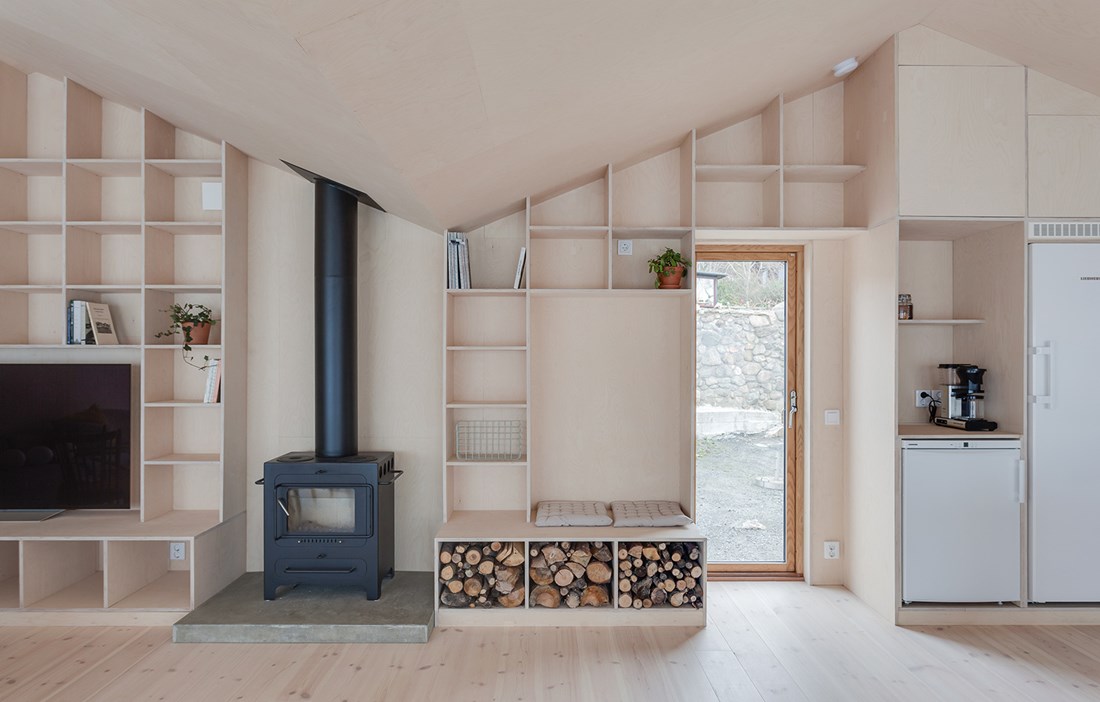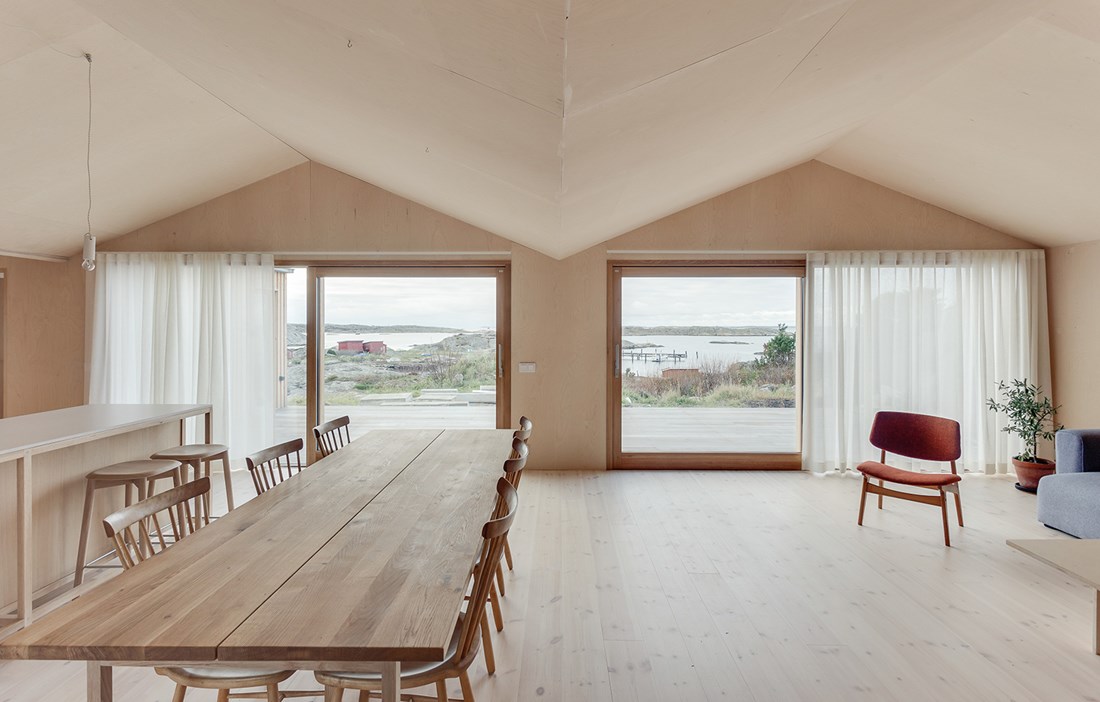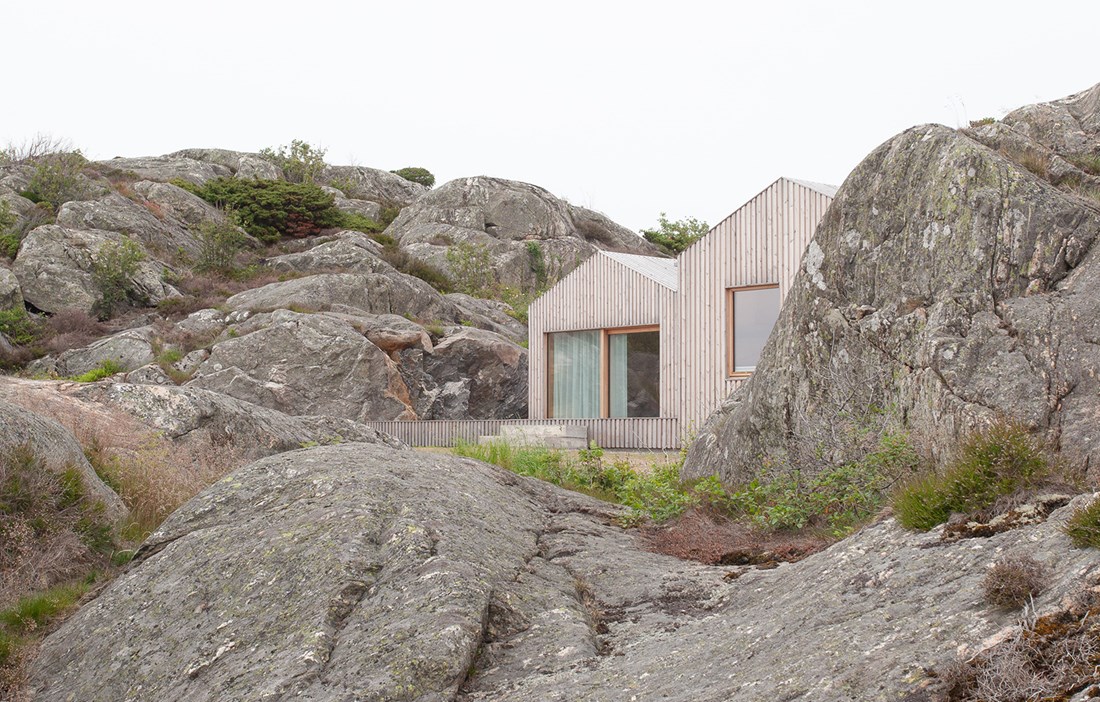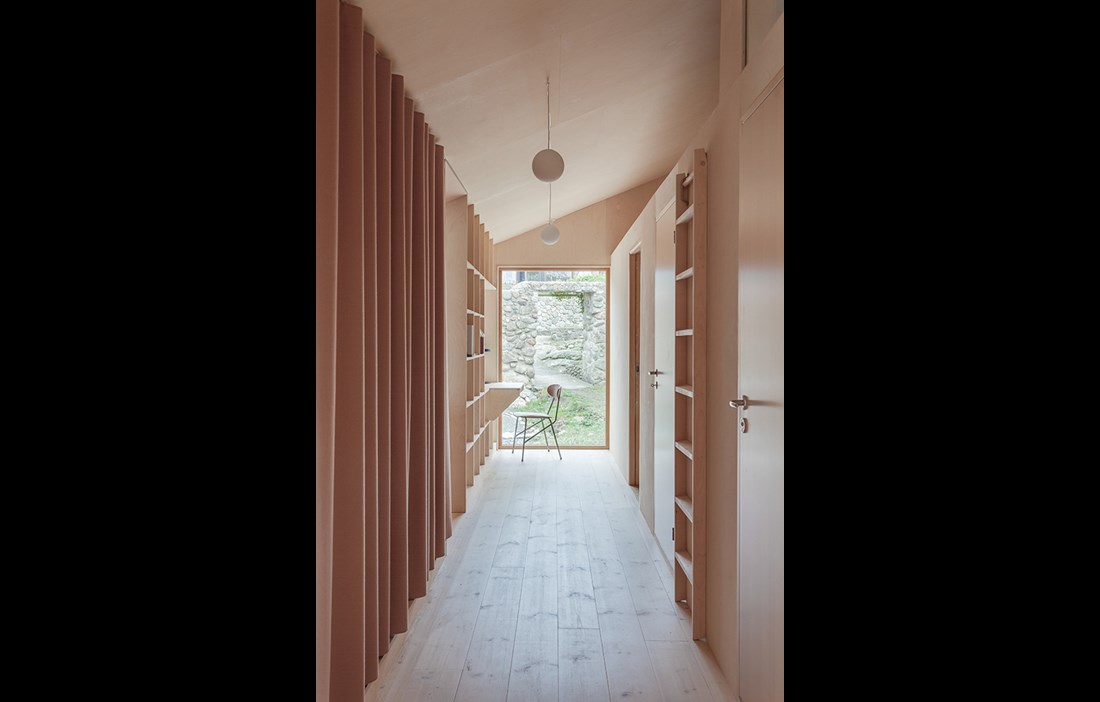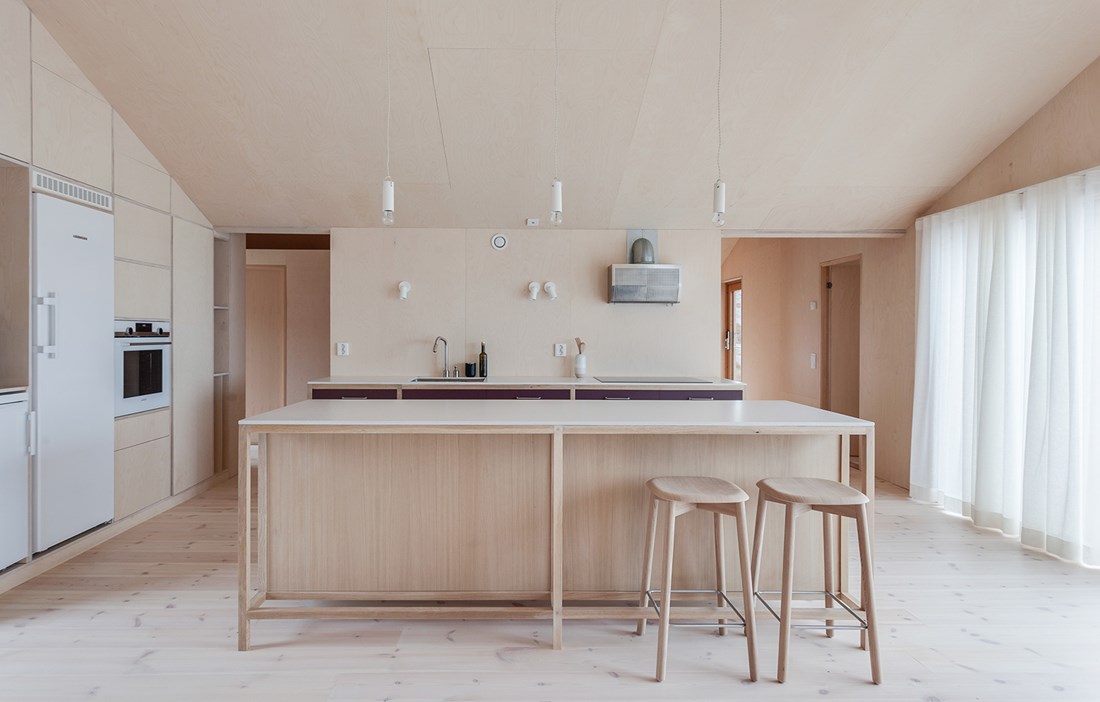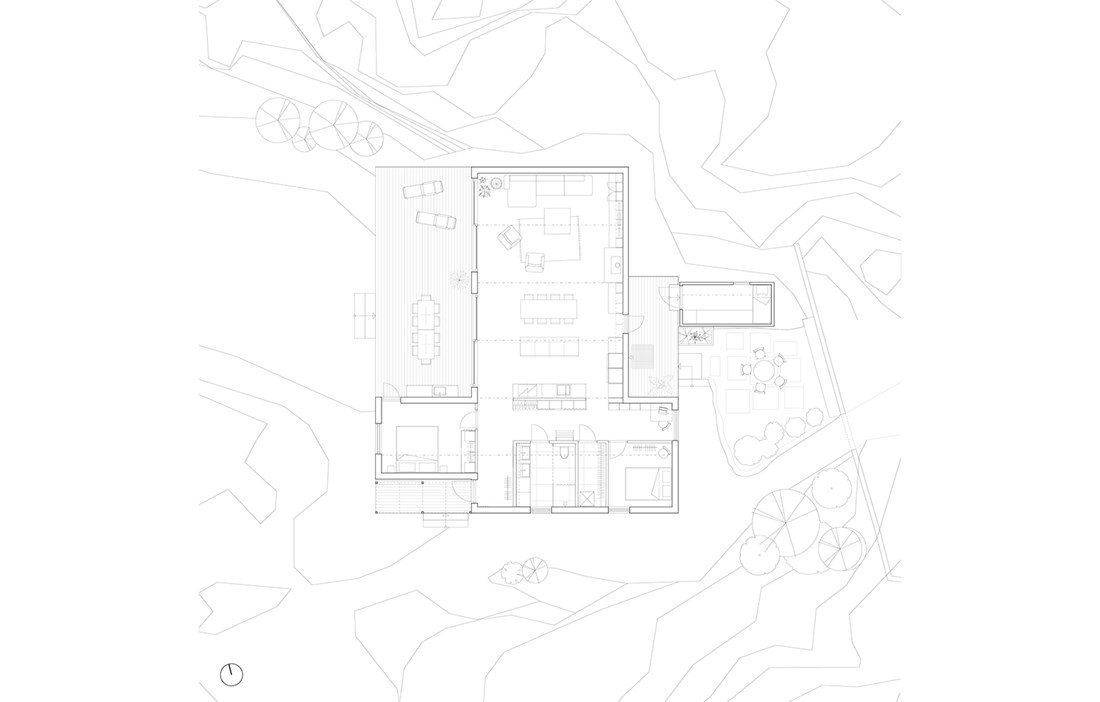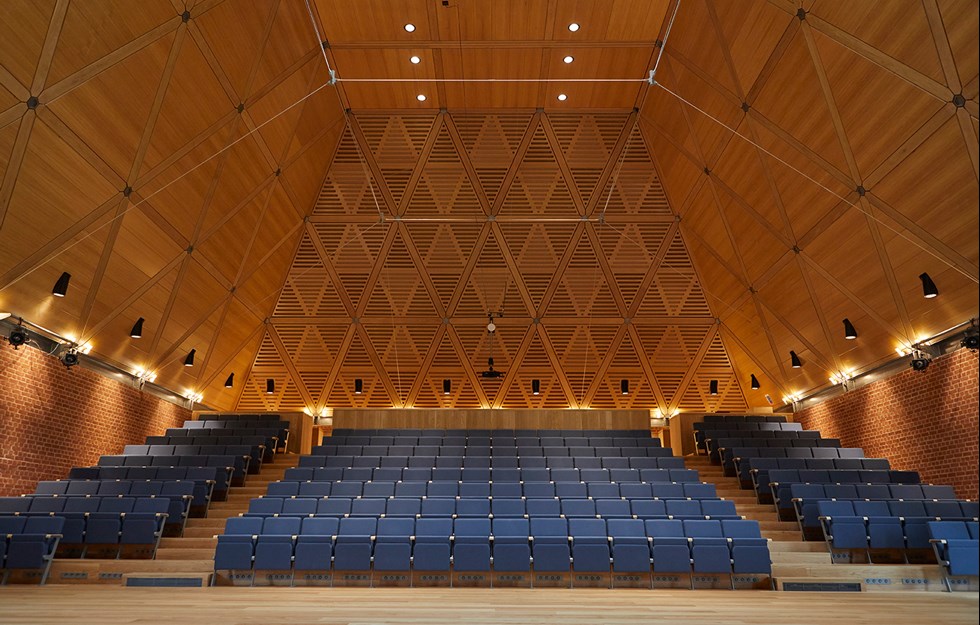On the island of Brännö in Gothenburg’s southern archipelago, a holiday home has sneaked into the rocky landscape. Three low volumes are bound into one unit by the shared board-on-board roof in heartwood pine.
“We wanted to root our choices firmly in this place, in terms of volume, material choices and tradition. The volumes are tailored to, and interact with, the surrounding rocks and use the features of the plot to create shelter and privacy. The shapes also hark back to a well-known traditional vernacular on the West Coast,” says Mathias Holmberg, architect and son of the clients.
The way the home discreetly melts into its surroundings is no doubt also due to the roof, which is essentially an extension of the façade, creating a monolithic look overall.
“The roof is an important part of the building, because it can be seen from several directions. One of the first ideas was to create a building with a flat roof, clad in sedum. However, in the end it felt like too much of a compromise that restricted the interior options. Instead, we came up with a design that both preserves and frames the views, while at the same time creating exciting spaces inside,” explains Mathias.
Board-on-board roofs have historically been found on various types of building, mostly in northern Sweden, but also on Gotland, for example. In recent years, that interest in using wood on roofs has been rekindled.
“The ability to create a unified feel with the same material on the façade and roof, coupled with the connection to a historical building tradition, made a board-on-board roof the most interesting choice,” continues Mathias.
To avoid standing water in the roof’s valleys, he has fitted V-shaped flashing that channels the water away to the rear. As an extra safety measure, the roofing felt has also been supplemented with a welded rubber sheet. The rebates around the windows and sliding doors are clad in the same heartwood pine as the façade. The window and door frames are made of oak that simultaneously interacts and contrasts with the pine.
Brännö is a car-free island, so the loose timber for the home was dispatched in handy packages, first by boat and then by digger and occasionally flatbed scooter. The environment on Brännö is quite exposed, but after studying several reference projects, Mathias Holmberg felt confident about leaving the façade untreated.
“There’s something wonderful about having a natural material with no additives. The site also proved particularly suitable for wood, as it is regularly hit by strong winds that dry up any moisture. There are also no trees on the plot to cast shade or drop leaves onto the house.”
The untreated wood is now silvering at its own rate and will be left to its own devices. It was therefore an important part of the design not to have any eaves, in order to avoid extra movement in the wood.
And it is not just outside that the roof makes a bold statement. It also plays an important role in the interior, with rooms that are open to the roof ridge and clad in pale birch plywood. The height alternates between 2.1 and 3.0 metres, with the variation creating both space and good acoustics, despite the flat surfaces. At the same time, the shifting levels also help to mark out the different functions of the three volumes: private section with bedrooms and bathrooms, kitchen and dining area, and living room.
“We wanted to create a sense of openness between the living room and kitchen, so that it becomes a real social space, while at the same time creating defined zones. By varying the height, we also create a symbiosis between the exterior sight line and the experience inside the rooms,” says Mathias Holmberg.
Text Johanna Lundeberg

